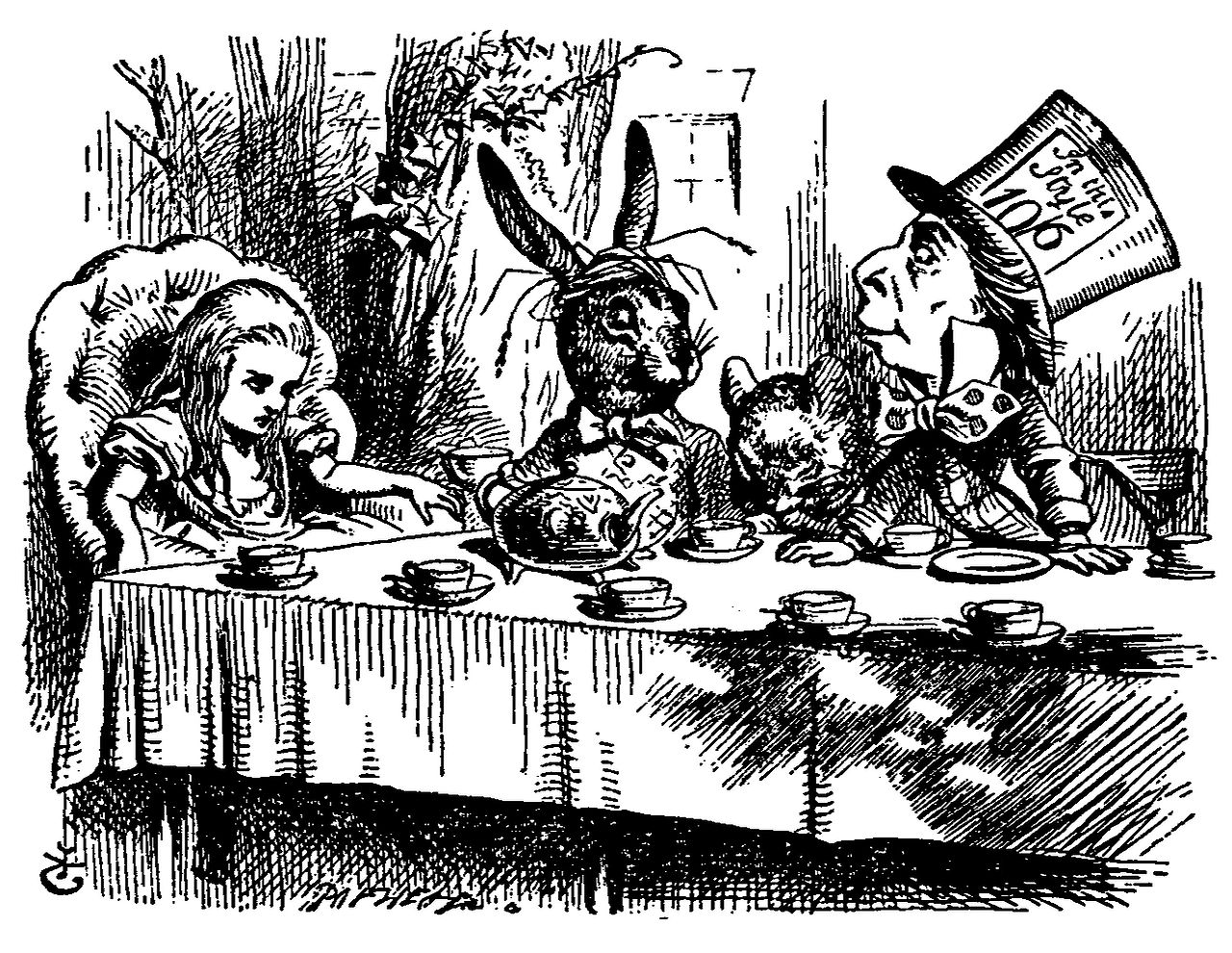What made Alice so popular?
What made Alice popular with children was how it speaks to their feelings, both in its attention to entertainment and how it relates to their lives.
A good illustration of both these qualities comes in the Mad Tea Party.

Alice sighed wearily. “I think you might do something better with the time,” she said, “than waste it in asking riddles that have no answers.”
“If you knew Time as well as I do,” said the Hatter, “you wouldn’t talk about wasting it. It’s him.”
“I don’t know what you mean,” said Alice.
“Of course you don’t!” the Hatter said, tossing his head contemptuously. “I dare say you never even spoke to Time!”
“Perhaps not,” Alice cautiously replied: “but I know I have to beat time when I learn music.”
“Ah! that accounts for it,” said the Hatter. “He won’t stand beating. Now, if you only kept on good terms with him, he’d do almost anything you liked with the clock. For instance, suppose it were nine o’clock in the morning, just time to begin lessons: you’d only have to whisper a hint to Time, and round goes the clock in a twinkling! Half-past one, time for dinner!”1
This section features plenty of humor and fantastical imagery and relatable elements in how Alice interacts with the partiers.
On the most obvious level, this sequence is a humorous progression of nonsense dialogue, but its wordplay creates another level of interest. The physical metaphors we use for time become literal, creating the fantasy image of Time as a person who would be willing to help you escape your dull lessons. This double layer of fantasy captures children’s attention and invites them to use their minds to follow the wordplay. They can enjoy the text for its whimsy and, if they choose to, they can think deeply about how it works. In this way, Alice entertains children without talking down to them.
The partiers's treatment of Alice also relates to how young children feel spoken over by adults. The Hatter lords himself over Alice, who is merely curious about his meaning, with his connections and knowledge—she's so ignorant that she isn’t even acquainted with Time! This reflects the common scenario of children wanting to understand something but being treated like they are inferior for not already knowing. However, because it pokes fun at the “madness” of the adult, Alice makes the struggle less upsetting while helping children feel heard.
In many of its scenes, Alice combines these two elements—entertainment and relatability—to speak to children on their own level, feeding their imaginations and “appeal[ing] to [their] hearts.” Because its writing uses fantasy (without didacticism) to create emotional resonance with its audience, the whole book becomes an argument that children can benefit from imaginative literature in its own right.
In the end, one of Alice’s most important contributions to children’s fantasy is its steadfast belief in imagination as a way to connect with children. Click to the next page to read about that contribution in action!
Sources
1 Carroll, Alice in Wonderland, 56.